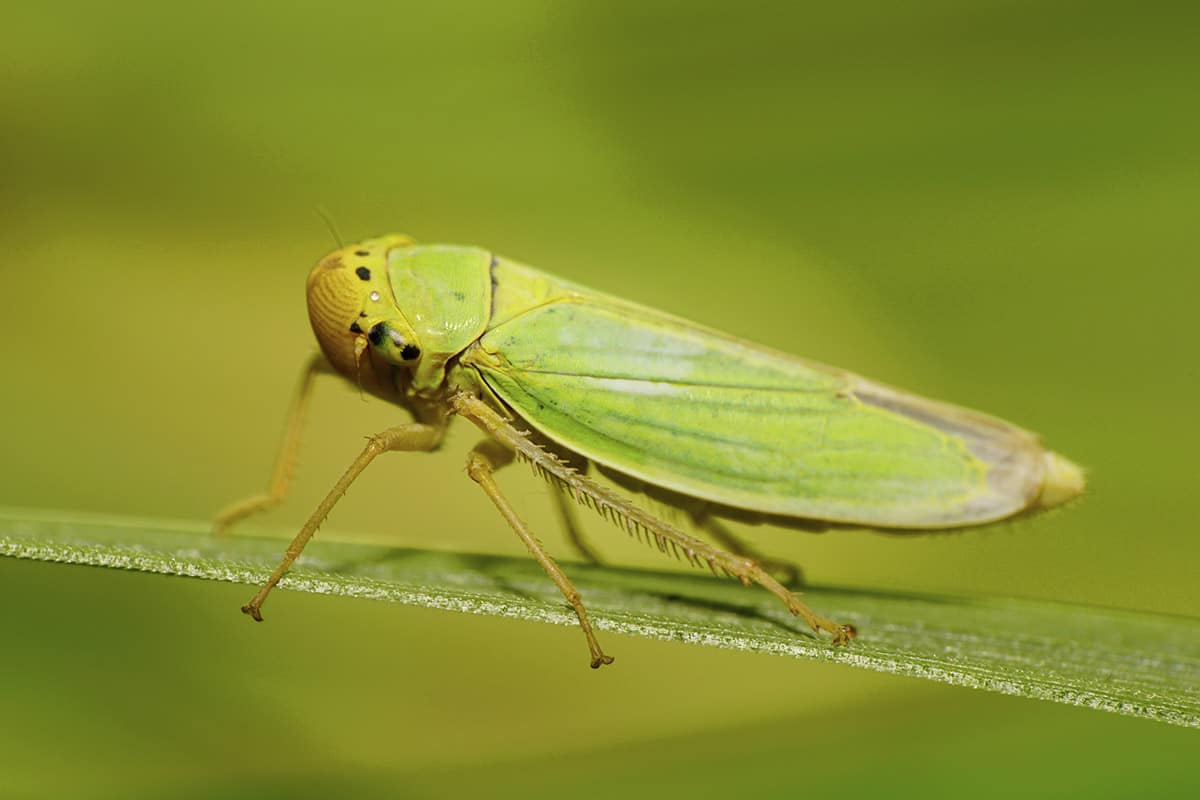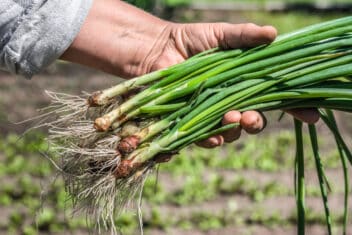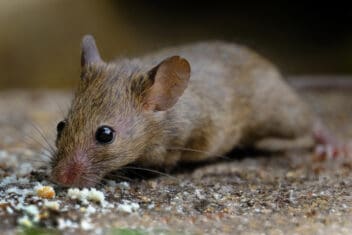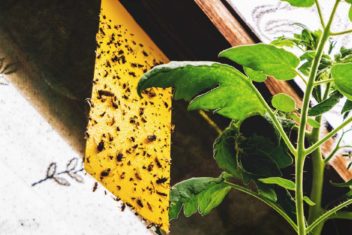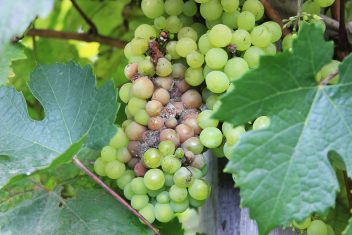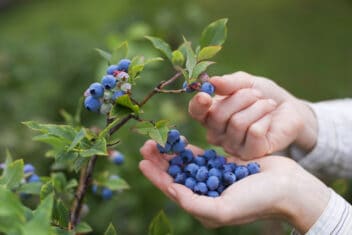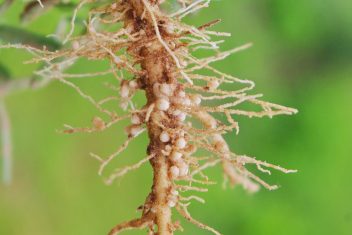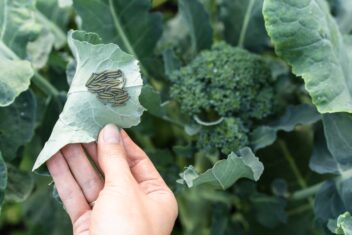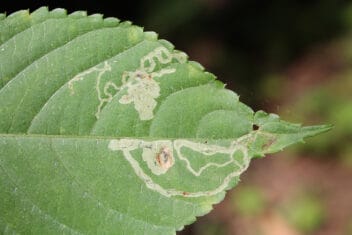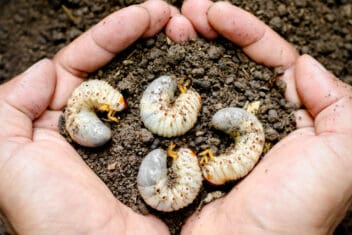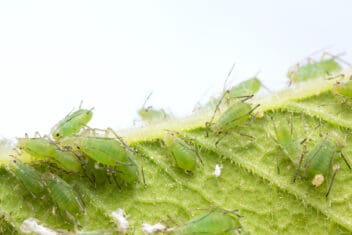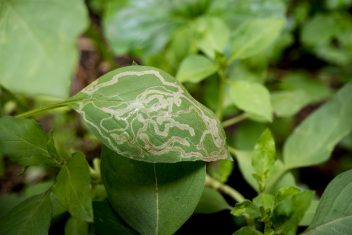Leafhoppers are everywhere and there’s isn’t a garden in the world not bothered by them. They’re destructive little sap-sucking insects, and they spread disease and damage plants.
Because they are so prolific, it’s inevitable that as a gardener, you’ll be affected by them at some point. With that in mind, let’s learn about them so you are forearmed for the battle.
Leafhoppers can drive you nuts some seasons, but the good news is you can control them.
What do Leafhoppers Look Like?
Leafhoppers are wedge-shaped and measure between an 1/8 and 1/2 an inch in length. They can be green, grey or brown, or a mixture of colors and patterns. The adults fly away when you disturb them and often flee just as you approach a plant they’re on.
Nymphs look similar to the adults, but without wings. They hop and jump away when you disturb them.
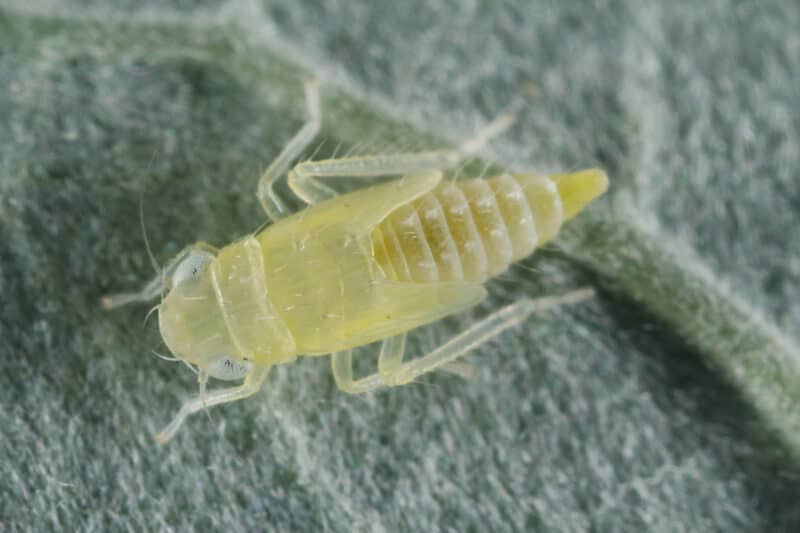
The eggs are extremely small, so it’s likely you won’t even notice them.
The Lifecycle of Leafhoppers
To truly understand leafhoppers and how they develop and damage your plants, we need to understand their lifecycle.
Leafhoppers begin impacting your plants the moment eggs are laid and the problem continues throughout the entire year.
Winter
This is the season that the adults overwinter and the females go about preparing for the next generation. They lay their eggs inside the leaves, leaf veins, and tender stems of your plants. This protects the eggs from hungry predators.
The damage this egg-laying causes results in injuries to the plant that look like pimples. The good news is that if you see this damage you have a head start.
Give the plant a spray of organic neem oil a few times over the winter season to try and stop an infestation later in the year.
Spring
Spring is when your garden comes to life. Unfortunately, this is when the pests start to multiply. When temperatures are high enough, a nymph will hatch 10 to 12 days later. The nymphs begin eating the tender parts of the plant and grow rapidly.
There are five stages to development from nymph to adult. This occurs rapidly over a 12 day period. The nymph will shed its outer layer about five times, discarding them in the area it’s feeding in.
As the nymph develops, the wings appear, before eventually forming into a completed adult, and the cycle of destruction continues.
Spring/Summer
Some species of leafhopper complete just one new generation each year. Others, unfortunately, complete up to five generations a year. That’s a lot of leafhoppers to deal with.
Over spring and summer, leafhoppers feed and cause damage to the plant. They can also spread disease. This is when an infestation can overwhelm a garden.
Damage Caused by Leafhoppers
Leafhoppers damage plants because they suck the fluid out after piercing the outer layer. You’ll often see a light speckling on the surface of foliage, which is the damage caused by piercing and sucking.
It’s also a result of the leafhopper injecting its toxic saliva into the plant material.
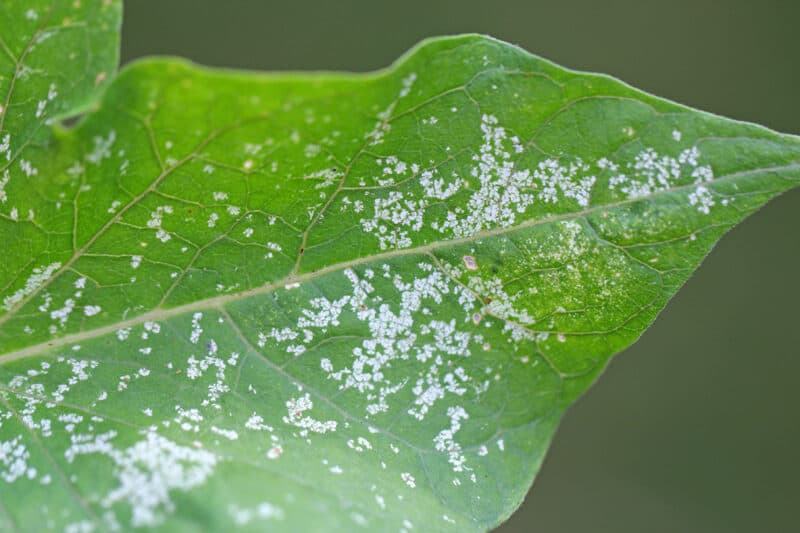
Yellowing or browning of the leaf also occurs and often causes leaves to drop prematurely. Damage to foliage may cause curling, and can result in stunted growth of the overall plant.
Heavy damage from feeding can cause young or weak plants to die off.
Leafhoppers also excrete a sweet, sticky substance known as honeydew. This attracts ants to the plant and can foster the development of fungal diseases.
Both the damage and honeydew are predominantly on the undersides of the leaves, although the damage can be seen on the upper leaf surface.
Food Sources of Leafhoppers
One of the problems with leafhoppers is the sheer number of varieties of them, and the fact that many varieties feed on specific plants.
The most common variety home gardeners will encounter is the Astor (six spotted) leafhopper. This variety feeds on vegetables and annual flowers in your garden.
Other varieties of leafhopper include:
- Rose leafhopper
- Potato leafhopper
- Common brown leafhopper
- Maize leafhopper
- Beet leafhopper
- Two spotted leafhopper
There are currently an estimated 20,000 types of leafhoppers. They eat vegetables, shrubs, grasses, and trees. Leafhoppers migrate to specific plants at various times of the season if their preferred food is available.
They particularly enjoy young plants that provide them plenty of sap.
The most common veggies that you’ll see leafhoppers on are lettuce, celery, carrots, beets, parsnips, potatoes, peppers, and tomatoes.
Controlling Leafhoppers
The moment you identify leafhoppers in the garden, it’s time to act. If you leave it too long, they can be hard to eliminate or even control.
The younger the bugs are, the better chance you have. Once they’re adults, there isn’t much you can do.
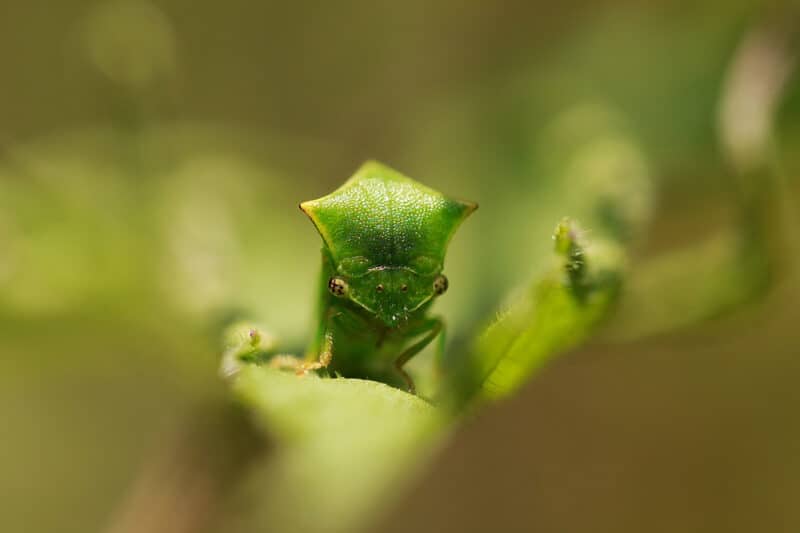
Preventative Measures Against Leafhoppers
- Eliminate any opportunity for leafhoppers to overwinter. Remove all debris and offcuts from your garden as soon as possible.
- Use row covers, cloches, or shade cloth to reduce leafhopper access.
Organic Control of Leafhoppers
- Organic Insecticidal Soap: The best time to address the issue of leafhoppers is in the nymph or egg stage. Insecticidal soap used at this point reduces the likelihood of the young leafhoppers reaching the adult stage.
- Pyrethrum Spray: I’ve found that pyrethrum spray is a good ‘knockdown’ against many pests in the garden. It normally takes one or two applications. With leafhoppers, it may take a few more sprays, but it does work.
- Diatomaceous Earth: Apply as per the instructions of the brand you buy. This is an organic, non-toxic method. In bad cases, use in conjunction with occasional applications of pyrethrum spray or insecticidal soap to make the knockdown swifter.
- Neem Oil: Use organic neem oil to interrupt the lifecycle of leafhoppers. In the initial stages of spraying neem oil, use an organic pyrethrum spray added to the neem spray for a knockdown effect.
Environmental Control of Leafhoppers
- Beneficial Insects: Ladybugs and lacewings are the perfect weapons against leafhoppers. Release or attract these bugs to your garden.
- Water: Apply a strong spray of water to plants when the nymphs are present. Do this in the morning so your plant has time to dry.
- Plant Health: Plants that are healthy and strong are better able to resist pests like leafhoppers. Ensure the garden is well watered and the garden soil is healthy with plenty of well-rotted manure dug in.
Disease Spread by Leafhoppers
The main diseases spread by leafhoppers are:
Sooty Mold
When the honeydew excretion from leafhoppers sits on leaves for a few days, it causes sooty mold to develop. This is a black coating, powdery in appearance, caused by a fungus growing on the honeydew.
Over time, this coating covers more of the plant, stopping the sunlight from reaching the foliage. The plant loses vigor, and over time becomes weakened. It’s also unsightly in appearance.
Mix a teaspoon of dishwashing liquid into a gallon of warm water. Use a soft cloth and the water mixture to wipe over the mold until it softens.
Then, use a hose to gently wash the soapy water and mold off the foliage.
Curly Top
Leafhoppers can spread curly top to a variety of plants. This virus causes plants to become shriveled and twisted.
Ensure plants have sufficient water and keep the garden clear of debris to help them resist both leafhoppers and the virus.
You may also want to allow for shade for the plant, as leafhoppers love feeding in the sun. While tomatoes and peppers might not do well with shade, plants like spinach and beets can handle some afternoon protection.
Don’t Give Up!
Leafhoppers are a garden pest that you will likely encounter in your gardening experience. They are one of the most prolific pests and they multiply rapidly if left to their own devices.
Like most pests, the best defense is avoidance. Keep your garden clear of debris and weeds. Act as soon as you see eggs, nymphs, or adults. Remember, it may take a few applications of your method of control, so don’t give up.
